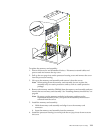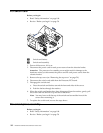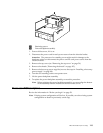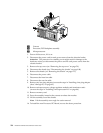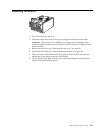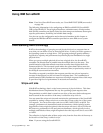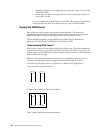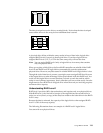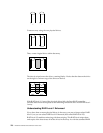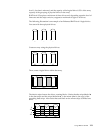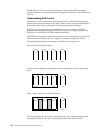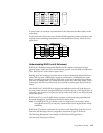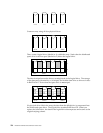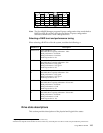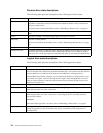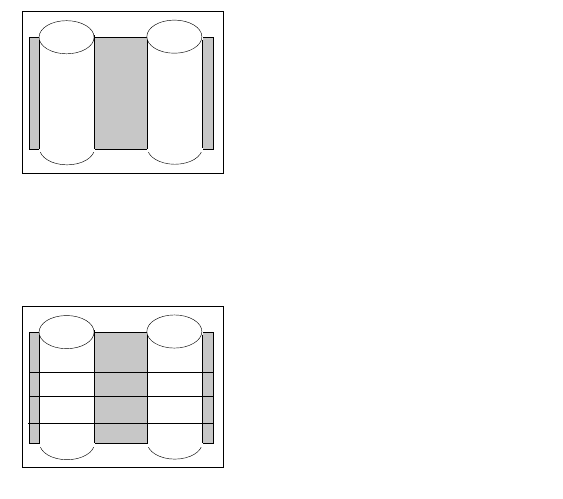
Using IBM ServeRAID 119
The data is striped across the drives, creating blocks. Notice that the data is striped
across all the drives in the array, but no redundant data is stored.
A physical drive failure within the array results in loss of data in the logical drive
assigned RAID level-0, but only in that logical drive. If you have logical drives
assigned RAID level-1, 1E, 5, or 5E in the same array, they will not lose data.
Note: You can assign RAID level-0 only to logical drives in an array that contains
only one physical drive.
When you replace a failed drive, the ServeRAID controller can rebuild all the RAID
level-1E and RAID level-5E logical drives automatically onto the replacement
physical drive. However, any data stored in a failed RAID level-0 logical drive is lost.
Though the risk of data loss is present, you might want to assign RAID level-0 to one
of the logical drives to take advantage of the speed offered with this RAID level. You
could use this logical drive to enter data that you back up each day and for which
safety is not of primary importance, that is, data that you can re-create easily. You also
might want to use a RAID level-0 logical drive when the work you are doing requires
maximum drive capacity.
Understanding RAID Level-1
RAID level-1 provides 100% data redundancy and requires only two physical drives.
With RAID level-1, the first half of a stripe is the original data; the second half of a
stripe is a mirror (that is, a copy) of the data, but written to the other drive in the RAID
level-1 array.
Because the data is mirrored, the capacity of the logical drive when assigned RAID
level-1 is 50% of the array capacity.
The following illustration shows an example of a RAID level-1 logical drive.
You start with two physical drives.
1 2
3 4
5 6
7 8



